The Castle Armory and the Legendary Artist Who Safeguards It: A Hulking Military Relic in Scranton, Pennsylvania Turns Into Hunt Slonem’s Greatest Preservation Project (Ghosts and All)
BY Catherine D. Anspon // 09.06.18The armory’s basement swimming pool may be destined to become a koi pond. (Photo by Chris Bolton)
Artist Hunt Slonem’s most epic preservation project yet involves a block-wide behemoth of a building, built near the turn of the last century, and more than 500 truckloads of possessions. And that doesn’t include paintings. Inside the artist’s 102,000-square-foot crenelated castle-like armory in Scranton, Pennsylvania — which has not one, but two turrets — lies a fascinating history.
Keeper of the Castle
Fearless. No other adjective could possibly describe this venture, which would make most preservationists quake. The Watres Armory, a National Trust property, was a white elephant of a building that dates back nearly 120 years. The hulking military relic is sited in the former coal and iron capital of Scranton in northeastern Pennsylvania, two hours from New York and two and half hours from Philadelphia.
The reviving rust-belt city of nearly 80,000 was once a mecca for railroads and robber barons. It’s best known today as the home of Vice President Joseph Biden — and the setting of the American version of The Office hit TV show.
Onto this unlikely stage stepped Hunt Slonem — the nationally and internationally exhibited artist of avians, bunnies, and historical and society portraits, whose art is in the collections of the Metropolitan, Guggenheim, and Whitney. Interwoven with his career as a neo-expressionist painter is his work as a preservationist, collector and rescuer of historic properties.
In addition to two massive lofts (one for living, one for work) in New York, the Watres Armory is just one of seven historic homes and buildings the artist lovingly maintains. There’s also a trifecta of Louisiana plantations, the Hudson River Valley Second Empire-style Cordt’s Mansion, a fox-hunting estate in the Catskills once frequented by Eleanor Roosevelt, and now this gilded-age remnant, as well as Scranton’s Beaux Arts masterpiece, the Woolworth Mansion.
The purchase of the Watres Armory, Slonem’s boldest acquisition, dwarfs the scale of the six other preservation projects combined. The 1900 armory was an ode to the Victorian era’s obsession with the Romanesque Revival style, down to Gothic flourishes and, above all, the crenellated double turrets flanking its imposing arched stone entranceway.
Designed by New York architect Lansing C. Holden — also the architect of the Woolworth Mansion — the mammoth four-story edifice served for more than a century as the home of Scranton’s chapter of the state’s National Guard. With its castle façade boasting 20-by-26 bays, the sturdy fortress formed from brick and stone also served as a hub for town life.
Politicos on the trail, especially sitting presidents or presidential candidates, orated from its halls (Teddy Roosevelt, Woodrow Wilson, Richard Nixon, and JFK, among them). It also offered up its vast spaces to serve as clinic during epidemics or as athletic courts for nearby University of Scranton. Its most cultural use was as concert hall; composer and pianist Sergei Rachmaninoff once graced its stage.
Now a glorious new book, Gatekeeper: World of Folly (Assouline), documents the extraordinary interiors, where Slonem’s exuberant decoration is at play, layered with scores of collections, treasures from bygone 19th-century epochs and isms. Fortuitously for the painter, the armory serves another purpose: It’s a veritable museum housing thousands of his canvases — three decades of prodigious art making.
Due to its fragility, Slonem rarely opens Watres Armory’s Romanesque Revival doors, and then only for special, intimate groups that usually involve historians, fellow preservationists, or academia.
As we queried by phone the keeper of this American castle, he answered the question on everyone’s mind: Is the Watres Armory haunted? Are there ghosts?
Slonem replied in the affirmative: “A century of them, and it has tunnels that go on for miles and miles beneath it. It’s also built over a coal mine, so there’s all this history. They think it was even part of the Underground Railroad.”
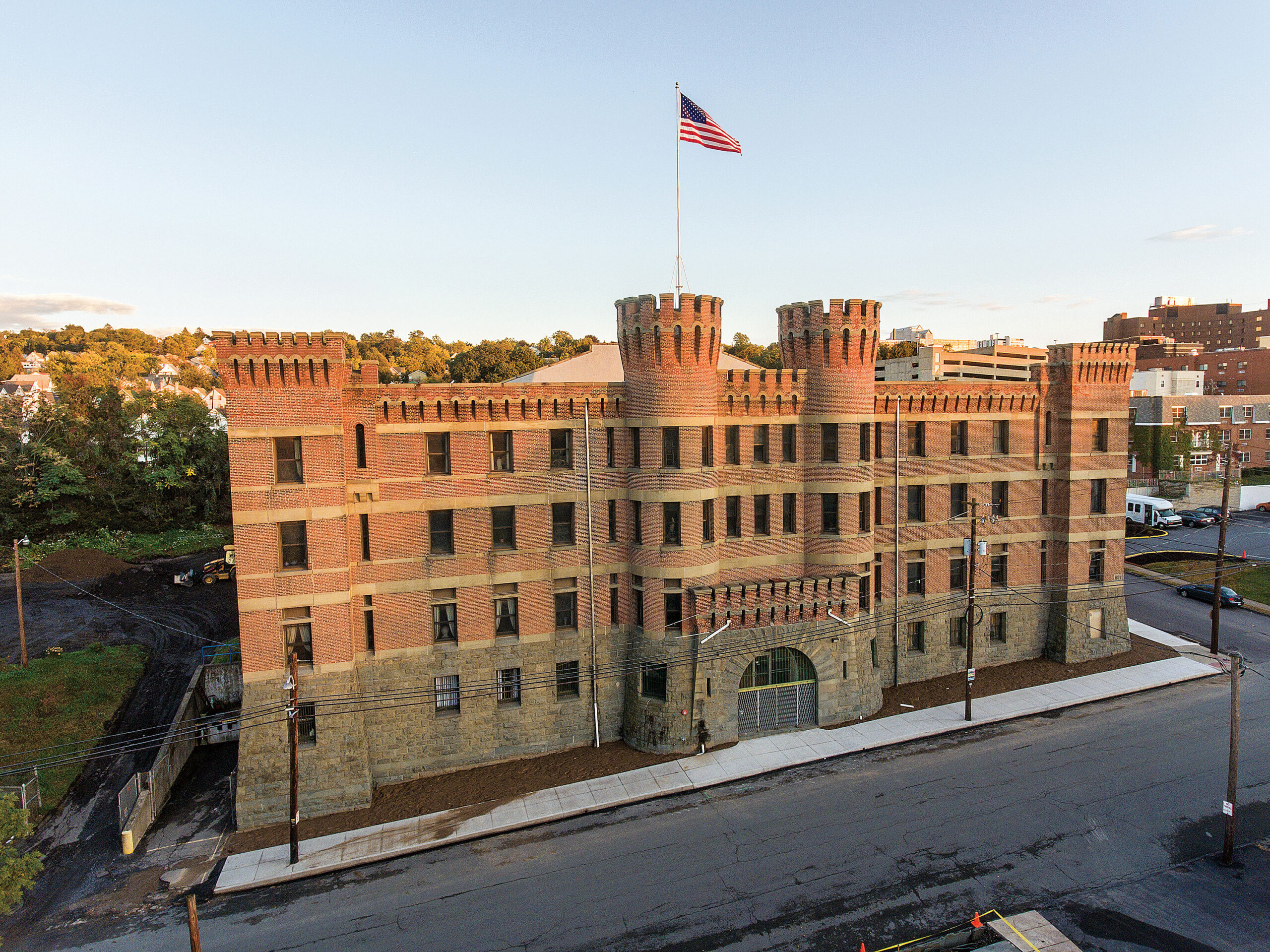
Slonem’s Newest Preservation Project
When did you discover the Watres Armory?
Oh, I guess three and a half years ago. It coincided with my move to a Brooklyn loft, which was not ready. They were tearing my NYC building down, and I had to be out. I heard about this space, and I went to see it. I wasn’t sure, but then I did it. I moved about 500 truckloads of my things there. It was really quite a wonderful project. The whole place is about 100,000 square feet.
This is your second Scranton property? You own the Woolworth Mansion, correct?
I bought the Woolworth after the armory. I saw the Woolworth the day I set foot in that town, and I went, ‘Oh, my God what is that?’ It wasn’t for sale and it had been abandoned for 18 years. About a year and a half after I did the armory, it became available, and I took it on. It was the hardest project I’ve ever done. There’s never an end to it — but it’s 99, 98 percent ready; the decorating is complete. I stayed there — it’s fabulous. It’s like a little Newport mansion.
Which Woolworth was it?
Charles Sumner Woolworth built the house. He and Frederick [Woolworth] were brothers, and they started Woolworth in the town of Scranton in 1879 on my birthday, I thought that was an interesting sign.
When is your birthday?
July 18.
So, this makes how many homes?
I recently bought Belle Terre, which is in Delaware County, New York, in South Kortright, which is 32 bedrooms and is on 50 acres with a pond. I just bought Madewood Plantation in Napoleonville, Louisiana. I now own seven, and I have two lofts in New York — one that I live in and one that I work in. I have Madewood Plantation, Albania Plantation, and Lakeside Plantation.
Then I have the Cordt’s Mansion, Belle Terre, the Woolworth house, and the armory. They’re all like art projects to me. They’re installations, and I deal with everything metaphysical — I deal with the [past] owners. It’s sort of this great experience, and I learn a tremendous amount about the history of the land and the surroundings and why they exist.
I could tell you stories for hours. The Woolworth house is the most challenging, because it had been gridded to Mr. Woolworth and it was almost impossible for anybody else to do anything to it. I had an English friend who’s very metaphysically adept, and she went in and had to redo the grids so that I could be there and make it work.
I’m sure the Armory has a number of ghosts …
A century of them. We had to ghost-bust it three or four times. And it has tunnels that go on for miles and miles beneath it. It’s also built over a coal mine, so there’s all this history and they think it was even part of the Underground Railroad … That’s what my metaphysician, Angelique de Wolfe, said. Anyway, it’s quite a fascinating thing. It had time capsules in the walls. It’s got a lot of remarkable features.
Was the Armory one of your most challenging?
Actually, that went really smoothly, other than the energy transitions that had to occur. We had a lot of people work on it, and it went quickly. Woolworth took much longer and was much more challenging. They are all different. Now I’m on to Madewood, and we’re relifting all the support beams and rewiring everything. It just never ends.
Where is Madewood?
Napoleonville, Louisiana. It’s on the cover of Plantation Homes of Louisiana and Historic Buildings by Michael Musso, the most recent one that came out a couple years ago, and it’s Henry Howard’s masterpiece — he was the great 19th-century architect of Louisiana. I studied it in school.
When did you acquire Madewood?
I just got it. It’s been less than a year.
You’ve been able to weave together the North and the South in your portfolio of historic homes.
I have paintings by artists that lived between New Orleans and Maine, and I have portraits of people that lived between New Orleans and New York. I mean, people got around more than we realized.
What about Scranton?
I knew nothing about Scranton, other than the fact that my psychic of 35 years was from there [Angelique de Wolfe]. That’s all I knew about it. And Joe Biden is from there. Hillary Clinton’s father worked there. But I knew nothing about it, or where it was. I just needed a big space, so that’s why that happened.
How often do you go to the Armory?
Every weekend. Well, I do all four New York and Pennsylvania historic properties every weekend.
What is the vibe like of the armory?
It used to be a little dicey. It was built privately by the robber barons. Scranton used to be the coal-mining capital of the word, a very wealthy little place. It has a history that goes on and on. I don’t want to talk too much about it because it’s so politically incorrect, but there was a time when the labor unions were just swarming. There’s a swimming pool in the basement — it’s huge, which is interesting.
Are you saving the pool?
It’s intact. I don’t have it filled because of the moisture factor. Yes, it’s very much intact, and I’ve thought of turning it into a koi pond. But other projects came first.
What about the turrets? How many circular rooms are there?
There are nine circular rooms. Well, including the basement. And there are four floors. There are two main turrets and the huge grand staircase. It’s really amazing. Because it was the National Guard, there were low ceilings, acoustical tiles, and there was linoleum on the floor. I got rid of all of that. There were fluorescent lights and chandeliers everywhere.
It was quite the project for me to transform it into something with a grander feeling. I used color and my work. The greatest perk has been that I had 30 years of paintings rolled up because I had so little space. Now I’ve been able to re-stretch them all and touch them up. So I show all my early works there. I’ve always wanted to have the space to do this.
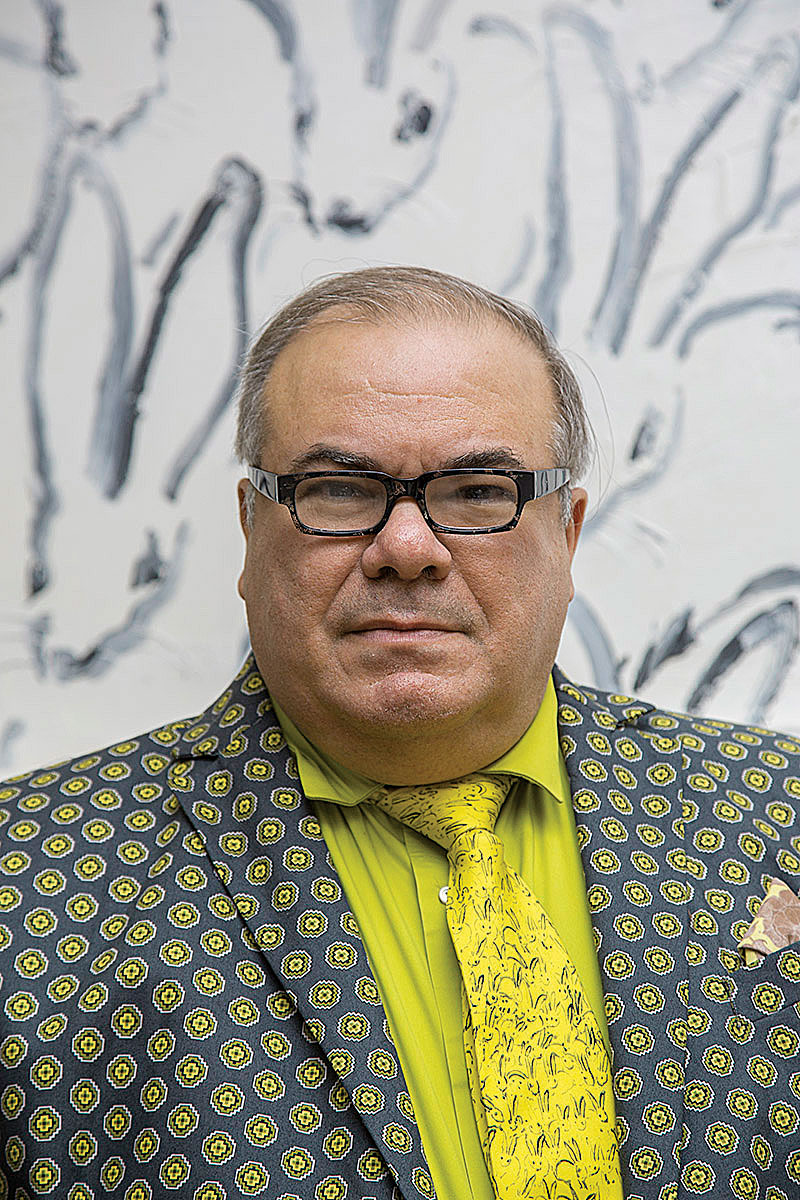
Do you see the Armory as being open to the public certain times of the year, where it could form a survey of your work?
I don’t see this as being open to the public. You have to find what works for you. There are so many precious little things, and millions of rooms. You can’t keep an eye on anything in there, and we’ve had some people come in unwanted.
Everybody asks me, “What are your plans?” I try to save fragile, historic properties. I don’t need to repurpose them for the public — I mean, one of the presidential candidates asked if they could speak there; five American presidents have spoken at the armory, including Kennedy, Teddy Roosevelt, Nixon and Woodrow Wilson.
But it’s just not set up for that — there’s no way of protecting it. Anyway, I don’t want to talk too much about this … It’s a fragile ecosystem. I try to just save them and transform them. It’s not a playground, you know. That’s not what it’s about. I like sharing it for a really great reason. My thing is more about showing the projects by the photographs and the documentation of what I’ve done, saving it in that way. It is all very fragile.
I do what I can. My purpose is to bring them back to life … it was really uncertain what the future of this building was going to be. My dream is to turn a drill hall into a palm court someday. I see pictures of it in the early 20th century where it was used for garden shows. It was all draped with fabric and silk and plants. But it’s a big room. It’s 50,000 square feet with 40-foot ceilings.
Who is Dr. Géza von Habsburg, who wrote Gatekeeper’s foreword?
A Hapsburg prince. He and his wife are good friends of mine. He’s the world authority on Fabergé. I have Hapsburg portraits in the armory; there’s also a portrait of the Queen of Hungary and two Sicilys by Winterhalter. The book is my way of sharing it with the world. I’m having a show at the museum, the Everhart Museum in Scranton in October.
This could be my favorite of all your buildings.
Well, you might love Belle Terre, too. They’re all great, every one of them. People say, “Why do you have so many?” It’s like a lot of kids: You love each one equally. They’re all unique. They’re all very special, and I have different collections in different places. Each one has served a wonderful purpose and enriched my life, but it’s a lot of work.
I think what you do is remarkable, because you don’t overly restore.
No, I don’t believe in over-restoration. And I hate modern kitchens. I don’t cook, and the plantations didn’t have bathrooms or kitchens in the houses originally. I don’t paint trim unless it’s rotting. I like keeping it of age, you know. My bedroom at Lakeside Plantation probably hasn’t been painted in a hundred years. Somebody walked in and said, “You know, people pay to make things look like this.”
What do you have at the armory that is unique to this building, as opposed to your other houses?
I have more marble and plaster statues here than anywhere else. A huge collection of marble busts. I have a tremendous number of gauntlets and sofas. I have a lot of 19th-century paintings. I played with color and fabrics here more than anywhere else. It’s a lot of my new fabrics on old furniture, but I love saving things.
I would say the volume of what I have at the armory is the most unique. I have a Chinese room that’s filled with little treasures. I have lots of ancestral portraits. A huge amount of Old Paris porcelain, great amounts of contemporary art, people that I knew or knew of. There’s some interesting silver. A lot of great 19th-century chandeliers. Collections of Wedgwood. A lot of Gothic cabinets and display cases. I was able to use pieces that you really can’t put anywhere else.
The wonderful thing about the armory is that it has this kind of faux-leather brown stuff on the walls up to about five feet, so it looks like it’s coated in leather, which was a very interesting late 19th-century look, and then I’ve spiced it up with blues and greens. I have a twin set of Gothic sofas by the great American cabinet-makers Roux. I have lots of photographs: Baron von Gloeden, Christopher Makos, Marcus Leatherdale. I have an Avedon … More than I can tell you. I just can’t even remember.
The armory has such a life of its own — it’s almost like I don’t exist. It’s just like this giant living, breathing thing that took form.
I love spending the nights there. I love wandering at night and visiting each room. It’s so complete — it’s like I don’t have to do another thing to it at the moment.
Where do you find the volume — do people bring things to you?
A lot of it is stuff I’ve had forever, and I just continue to collect. I have the bust of Zeus from the set of Cleopatra that I found in Kansas City. I travel all the time for shows, and I bring finds back from Cincinnati and Kansas City and Dallas. I scour the countryside. Currently, Belle Terre and Madewood House are my focus.
What will the Everhart museum in Scranton show in your October exhibition?
They’re going to show some of my early work that I’ve saved. My pre-Colombian gold series. That’s a double win for me, because I was able to save the work, and now it’s going to be shown. It hasn’t been shown since the ’80s in New York.
Your armory is similar to the Park Avenue Armory in New York, which gave birth to the Armory Show?
Yes, they were all built around the same time.
Is your building grander?
Well, the Park Avenue Armory’s a little bigger, I think. And it had rooms by Tiffany. This isn’t that grand, but it’s wonderful.
It’s grand enough.
Yes, it is.
Gatekeeper: World of Folly by Hunt Slonem, published by Assouline, $85; through assouline.com, amazon.com, and area booksellers.
Hunt Slonem is represented in Texas by Laura Rathe Fine Art, Houston and Dallas.


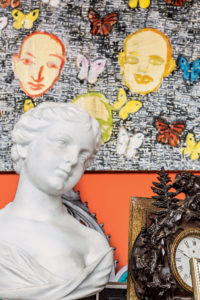

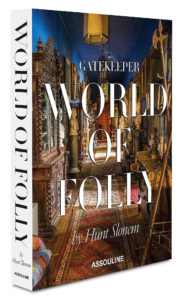

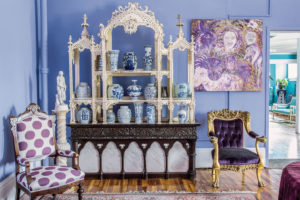





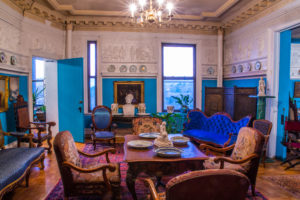

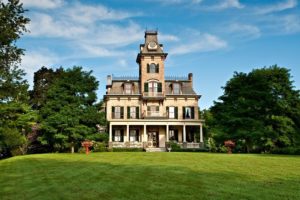
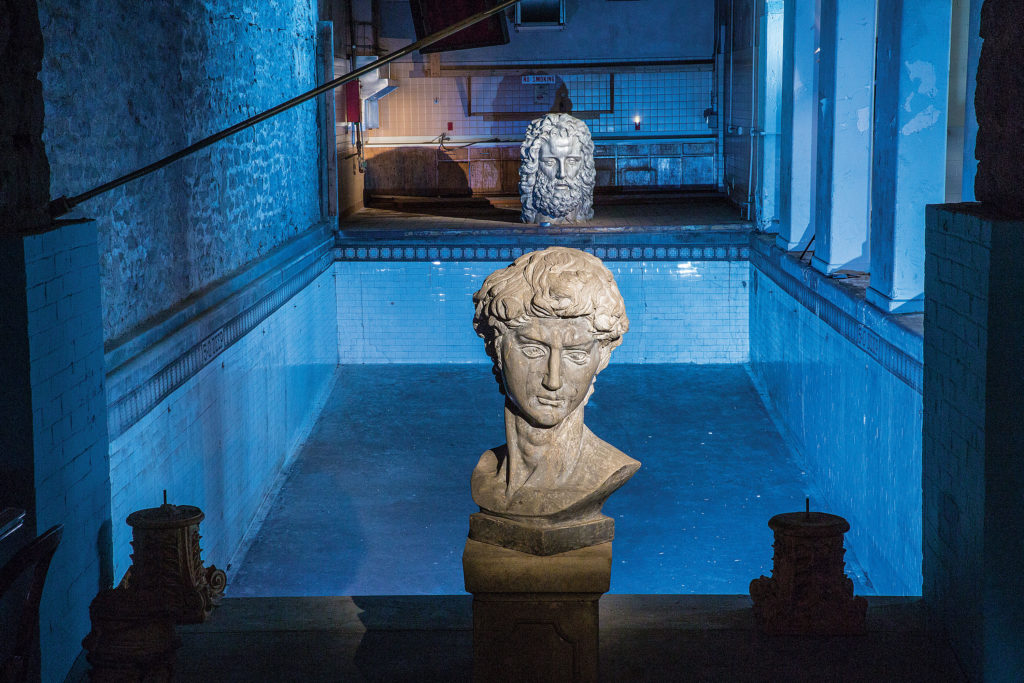
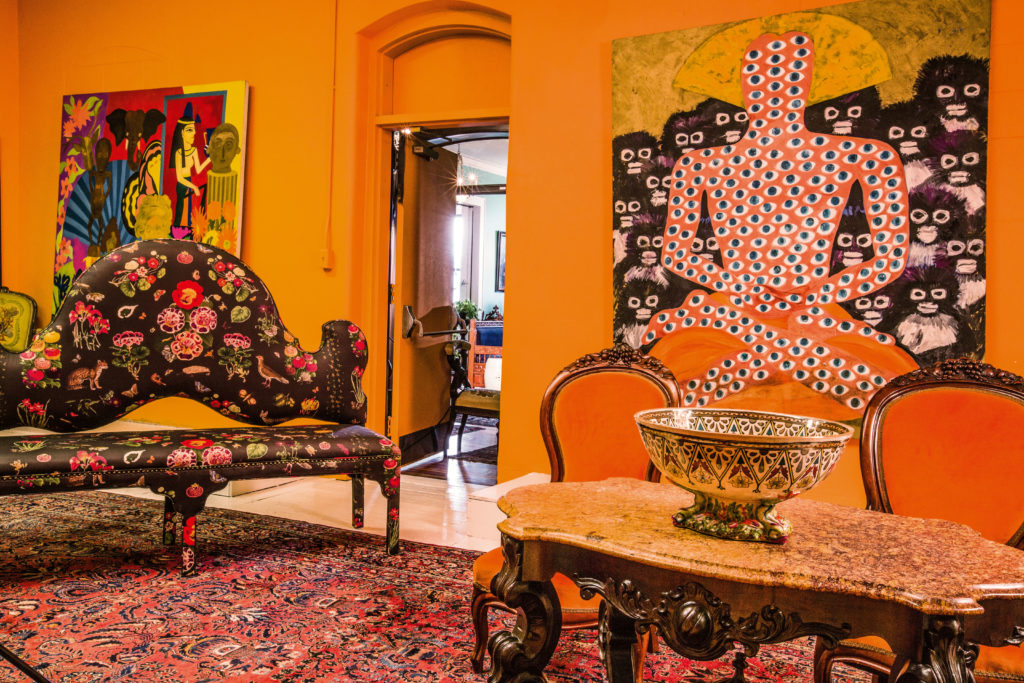
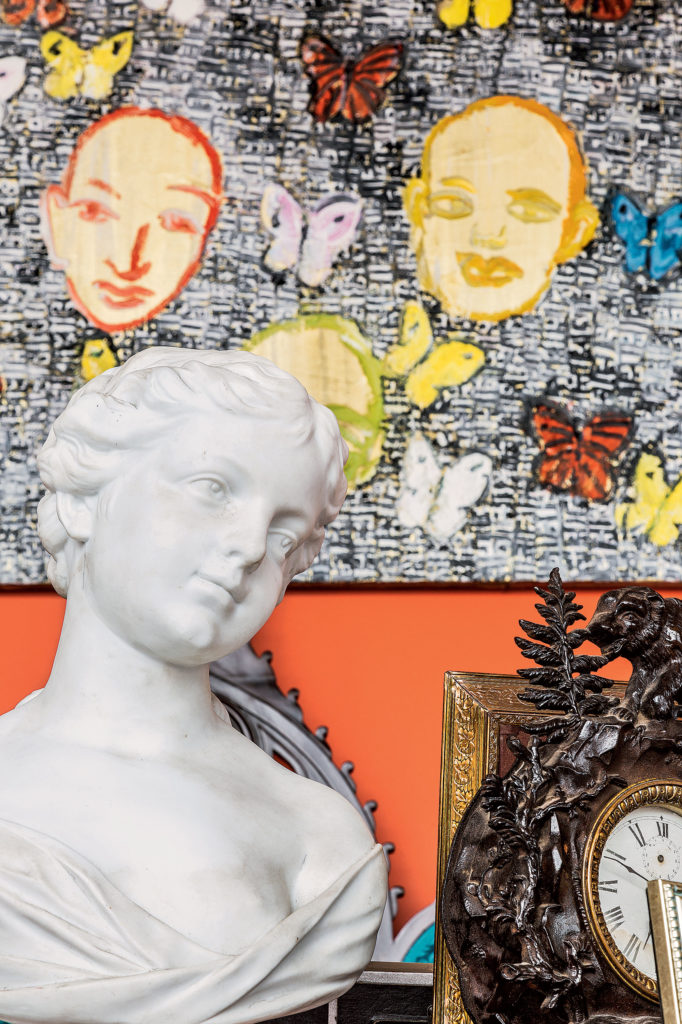

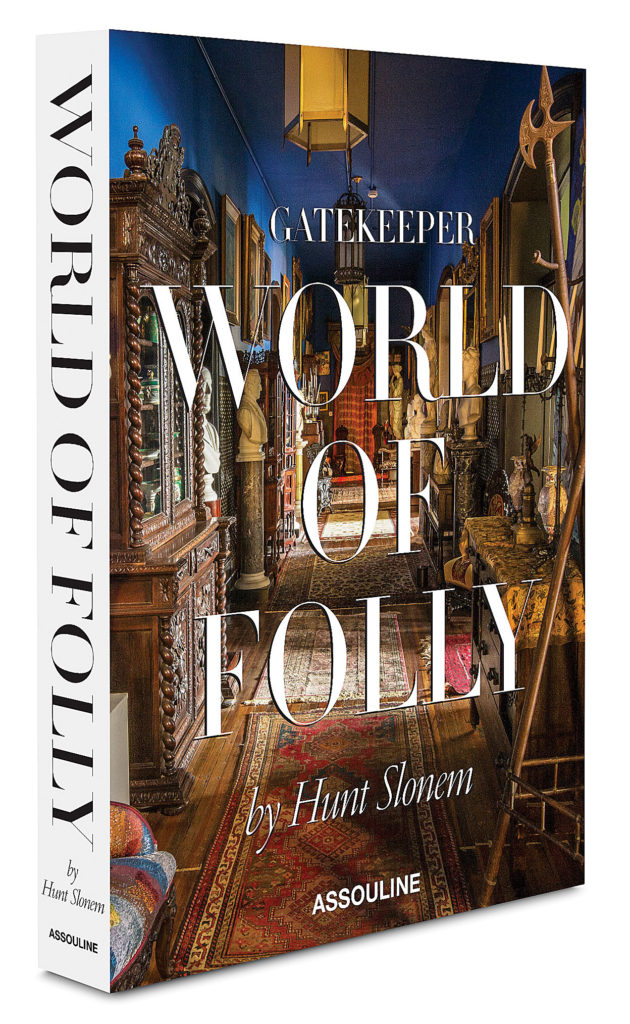




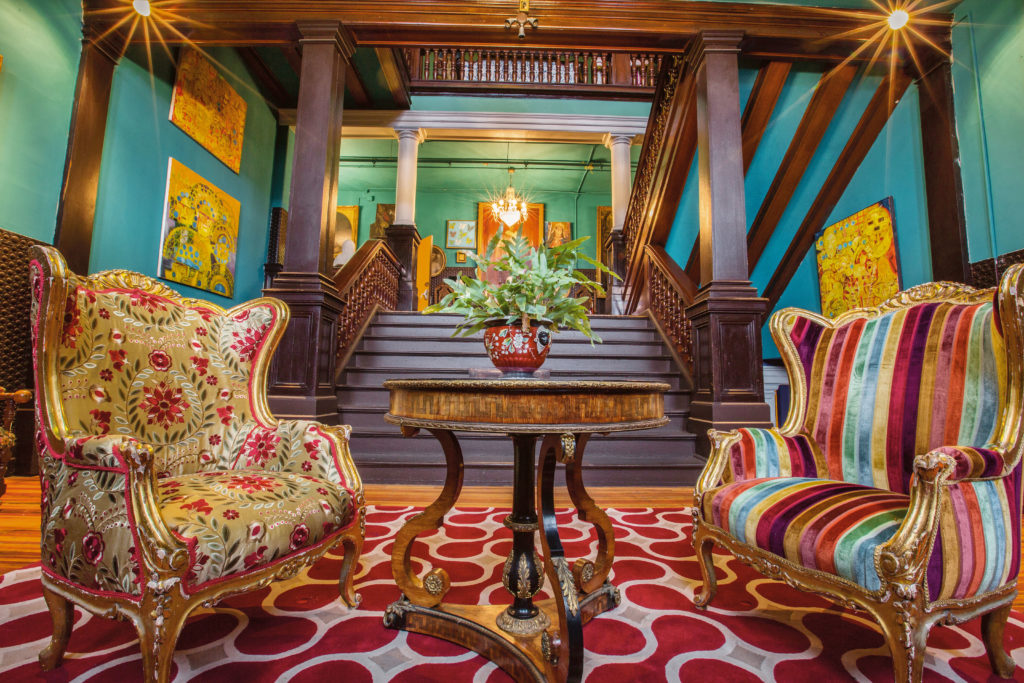



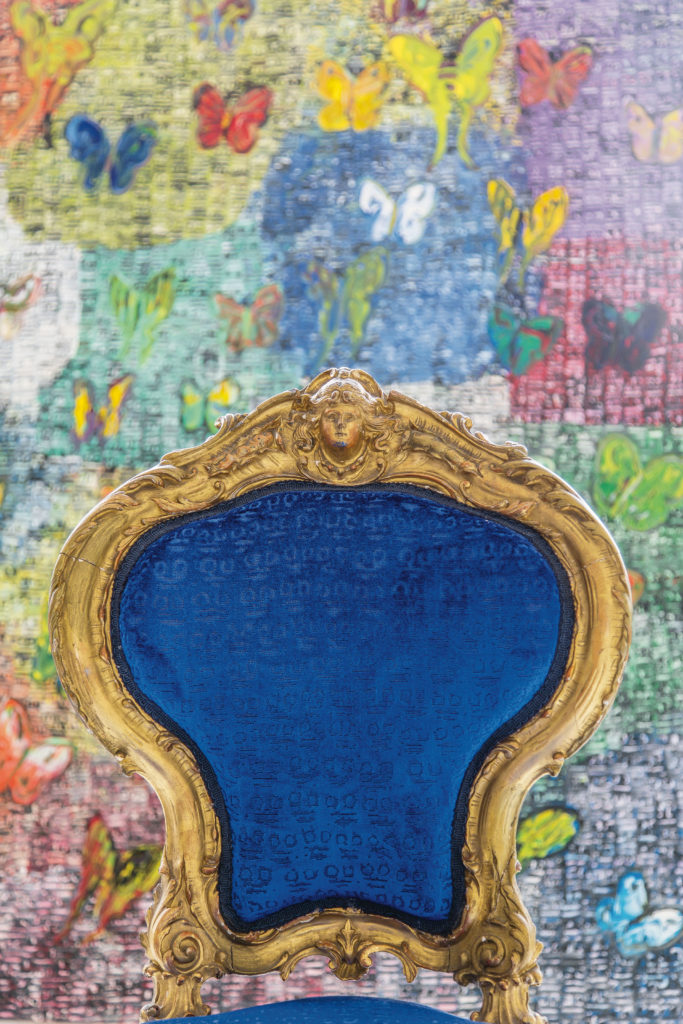


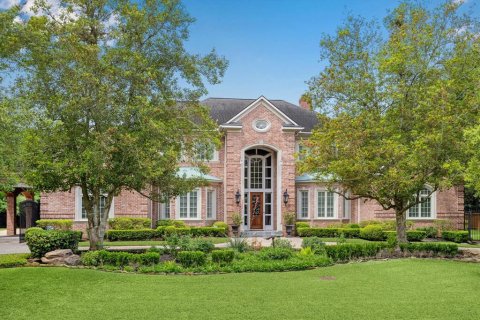






_md.jpeg)


_md.jpeg)






_md.jpeg)


